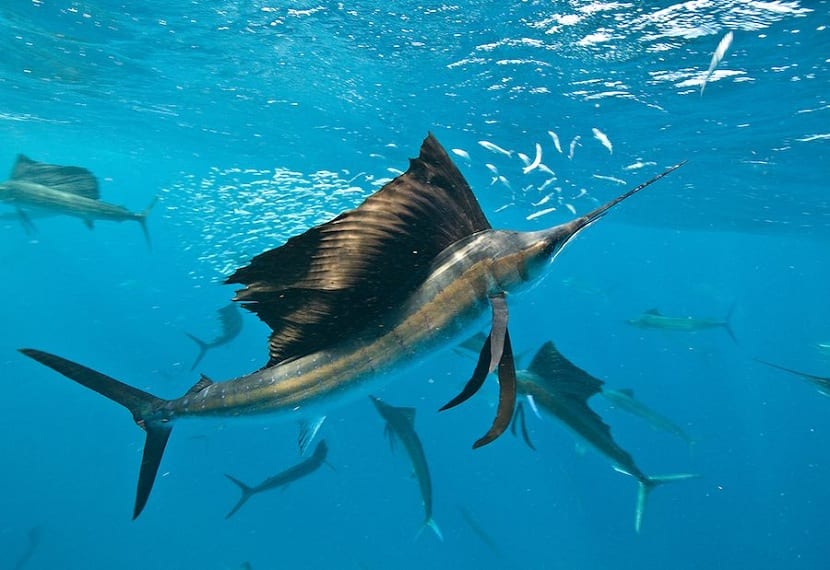
There are millions of types de peces in the sea and many ways of swimming for each one. There are those who do not know how to swim well, others who swim in a peculiar way and others whose speed is incredible. Today we are going to talk about a fish whose way of swimming is truly spectacular. It's about sailfish. With its peculiar dorsal fin with enormous dimensions, this fish can swim at a high speed in search of its prey or to flee from its predators.
If you want to know everything related to this fish, keep reading 🙂
Sailfish characteristics
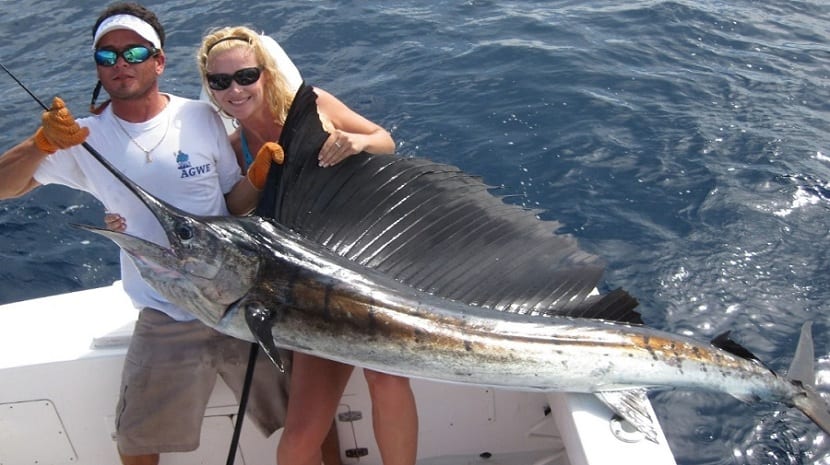
The sailfish, with a scientific name Istiophorus albicans, was discovered for the first time in 1792 and is considered a species from the Atlantic Ocean. It is also known as marlin fish. Is considerate one of the most fabulous fish that we can find in the seas and oceans around the world.
There is another subspecies that inhabits the Indian and Pacific oceans and is called Istiophorus platypterus. Both families have bluish or gray colors and a white belly. The Atlantic species is smaller.
Another peculiarity of this fish it's its snout. It has a somewhat strange shape, tapering to a point. It resembles a sharp saber. When this fish is in action, it is impressive how it is able to swim at high speeds in search of its prey. Due to its morphology, it can cut through water with extraordinary ease. Therefore, it can reach great speeds.
The first dorsal fin is the main element that makes it different from the rest de peces, having between 37 and 49 rays. The second dorsal fin is smaller and only has six or eight rays. The tail is a fundamental element that it uses to reach high speeds since it is joined by a strong and powerful caudal peduncle.
You can find specimens of sailfish weighing 100 kilograms. The most normal thing is that they are around 50 kg.
Habitat
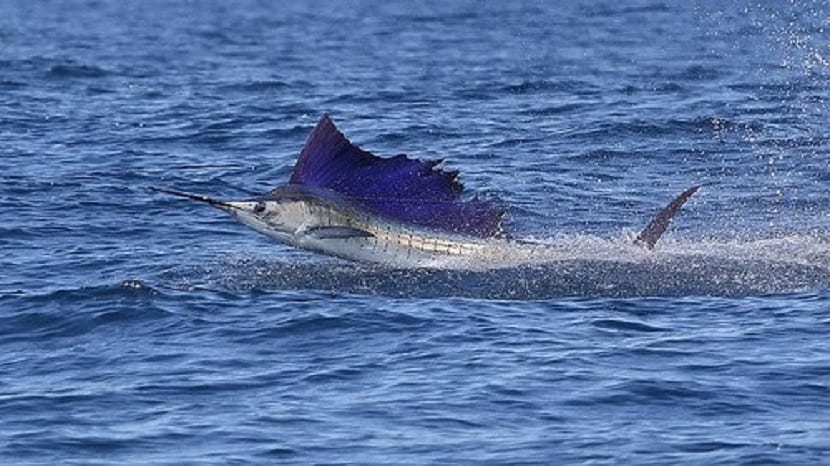
This fish inhabits the upper waters of the oceans. It does not usually live in the depths and they always prefer warmer and warmer waters. In the area where they are distributed, they are very easy to find their prey. Thanks to the speed at which they move, their task of obtaining food is not very difficult.
The Atlantic sailfish vary their range depending on the temperature of the water and in some cases the conditions of direction and strength of the wind. At the extremes of its range (both north and south) it appears only during the warmer months, as it prefers warmer waters. Changes in their habitat are mainly due to the migration of their prey to other areas. Therefore, in order to continue feeding, they must move.
They are generally found in the warmer and higher areas above the thermocline. When it has to migrate, it does so to the waters closest to the coast. Its ideal temperature is between 21 and 29 degrees. On some occasions, juvenile specimens have been found de peces sailing in the Mediterranean Sea that have been lost during their migratory journeys.
On the other hand, the Indian-Pacific sailfish are generally found in temperate and tropical waters of all the world's oceans. Its distribution is tropical, but it can also be found in equatorial areas. This species is found throughout the coastal regions of temperate latitudes, although they can also be found in the central areas of the oceans. They are epipelargic species. This means that they spend most of their adult life in the upper zone of the thermocline.
Food
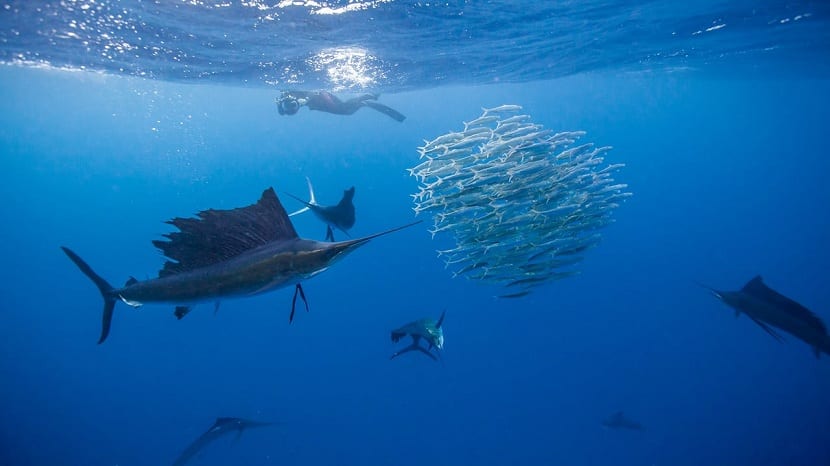
This fish is completely carnivorous and is considered one of the most skilled predators in the oceans. It is undoubtedly the fastest of all warm and temperate waters.
It usually feeds on squid, octopus, tuna and flying fish. Can use its beak to remove cells de peces of the entire school and in this way make them more vulnerable to being captured. They are capable of diving up to 30 meters deep, but they prefer to do so closer to the surface to benefit from sunlight. It is located near the coral edges to have a broader view of the terrain and be able to corner its prey.
Behavior
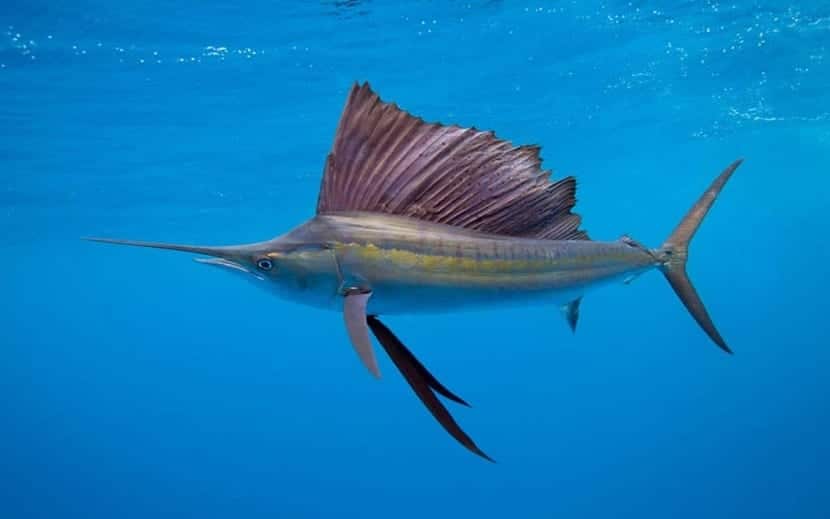
The sailfish is a solitary species (hence its ease in continuous migration in search of prey). It is rare to see them in groups, although on some occasions they can be seen in small groups to facilitate hunting.
It is a species that organizes and tests the terrain first before launching out to hunt to avoid possible hindrances.
Males and females have the same behavior, surrounding the prey and forcing the school to close ranks. The thrusts are fast and accurate, each one is preceded by a surprising deployment of the dorsal fin, which more than doubles the hunter's profile.
Reproduction

The reproduction of the sailfish has several contradictions. The female spawns numerous times in the same year. The place they choose for spawning is usually an area where the temperature is around 26 degrees Celsius. They usually do it around the coasts. For each laying that the female makes lays more than a million eggs that are thrown adrift. The male, once the eggs are released, immediately fertilizes the vast majority of the eggs.
From the eggs that manage to be fertilized, small hatchlings come out that remain floating on the surface, becoming an easy prey for predators. Therefore, of the million eggs that the female releases, only a few manage to survive to grow and become adults.
Young fry have an extremely rapid development so, if they manage to survive the first stage where they are fresh meat for predators, they will be able to reach their adult stage. Their fins are fully developed when they reach five centimeters in length.
The most frequent spawning months are between March and October. When fish are adults, their most common enemies are larger fish such as sharks.
With this information you can learn more about one of the most incredible fish in the seas.